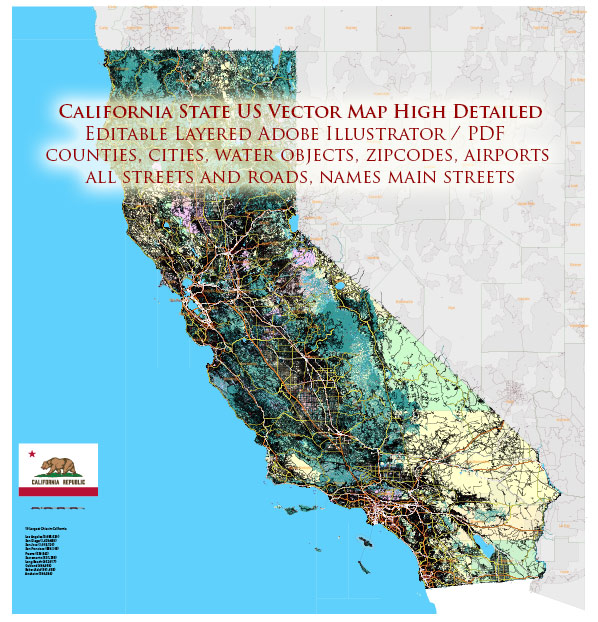The urban development of California, a state located on the west coast of the United States, has been shaped by a complex interplay of historical, economic, environmental, and social factors. Here’s a brief overview of the history of urban development in California:
- Spanish Colonial Era: The urban history of California begins with the Spanish colonization in the late 18th century. Spanish settlers established missions, presidios (forts), and pueblos (towns) throughout the region. Cities like Los Angeles, San Francisco, and San Diego have their roots in this period, with their layouts reflecting the Spanish colonial grid pattern.
- Mexican Era: In the early 19th century, California became Mexican territory, and urban development continued under Mexican rule. Mexican land grants led to the expansion of ranchos and the emergence of a more agrarian and pastoral society.
- Gold Rush Era: The discovery of gold in California in 1848 led to a massive influx of people, known as the Gold Rush, which transformed the state’s urban landscape. Cities like San Francisco and Sacramento grew rapidly as people flocked to California seeking fortune. This era also saw the construction of infrastructure, including railroads and ports.
- Statehood and Industrialization: California became a state in 1850, and over the late 19th and early 20th centuries, the state’s urban areas continued to expand due to the development of industries like agriculture, oil, and manufacturing. This era also saw the emergence of suburban communities as transportation networks improved.
- World War II and Post-War Boom: During World War II, California played a significant role in the war effort, leading to further urbanization and the growth of defense industries. After the war, the state experienced a population boom and suburban sprawl, with the development of many suburbs in the Los Angeles area.
- Urban Challenges: As California’s population continued to grow, it faced urban challenges like traffic congestion, air pollution, and housing shortages. Many cities implemented urban planning strategies, such as zoning and public transportation, to address these issues.
- Environmental Concerns: California has a unique topography and is prone to natural disasters like earthquakes and wildfires. Urban planning and development in the state have had to consider environmental concerns, with strict building codes and land use regulations in place to mitigate these risks.
- Tech and Innovation: The late 20th and early 21st centuries have seen the rise of California as a global tech and innovation hub. Silicon Valley, in the San Francisco Bay Area, has become synonymous with technological advancements, leading to significant urban development and the creation of technology-focused urban areas.
- Diversity and Multiculturalism: California’s urban areas have a rich tapestry of cultural diversity, with a significant immigrant population. This diversity has influenced the development of ethnic neighborhoods, cultural institutions, and the overall character of California cities.
- Housing Affordability and Homelessness: In recent years, California has faced challenges related to housing affordability, leading to high levels of homelessness in many urban areas. The state government has been working on policies and initiatives to address these issues.
Overall, California’s urban development history is marked by a blend of historical influences, economic drivers, natural constraints, and a focus on innovation and sustainability. It continues to evolve as the state grapples with the complexities of urban growth and development.


 Author: Kirill Shrayber, Ph.D.
Author: Kirill Shrayber, Ph.D.